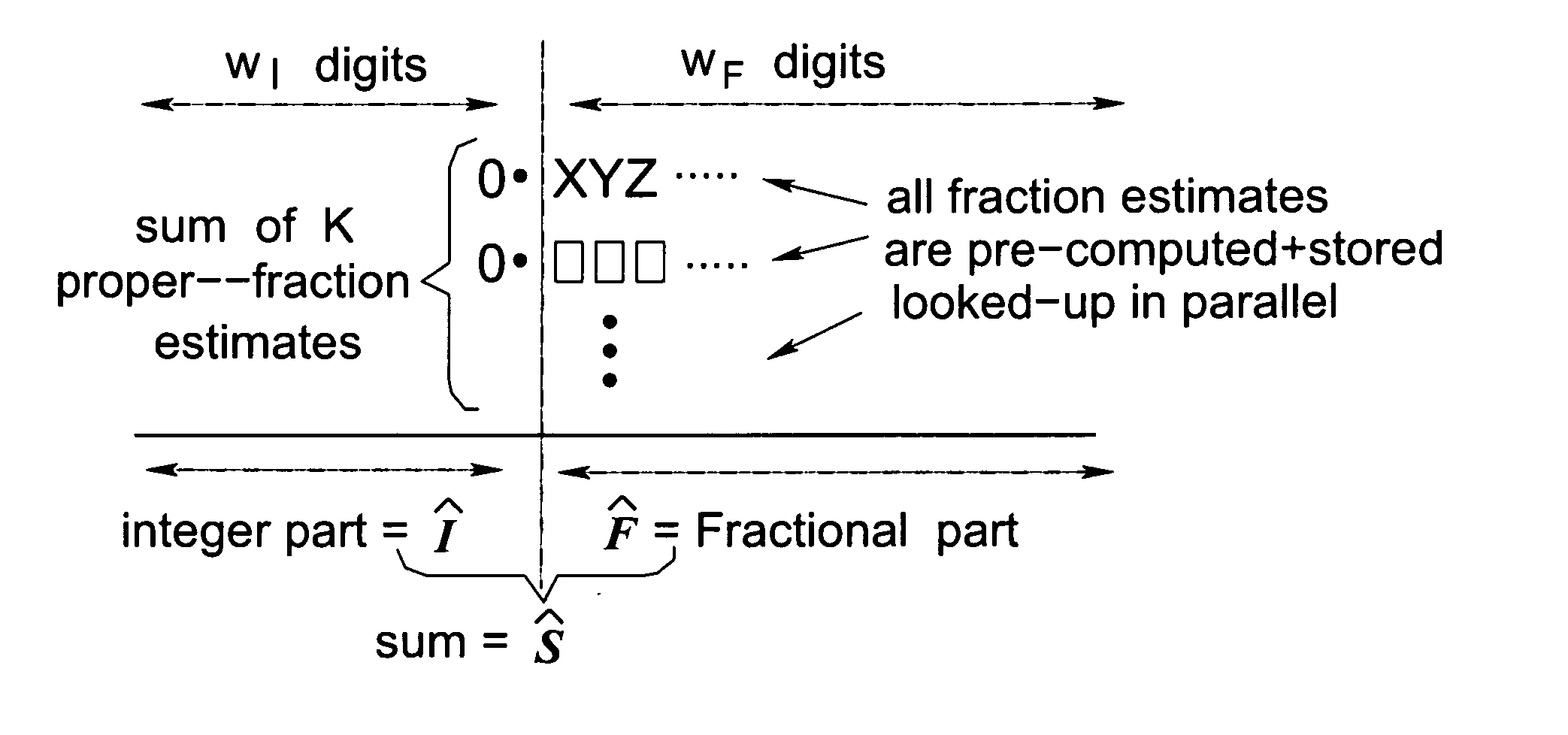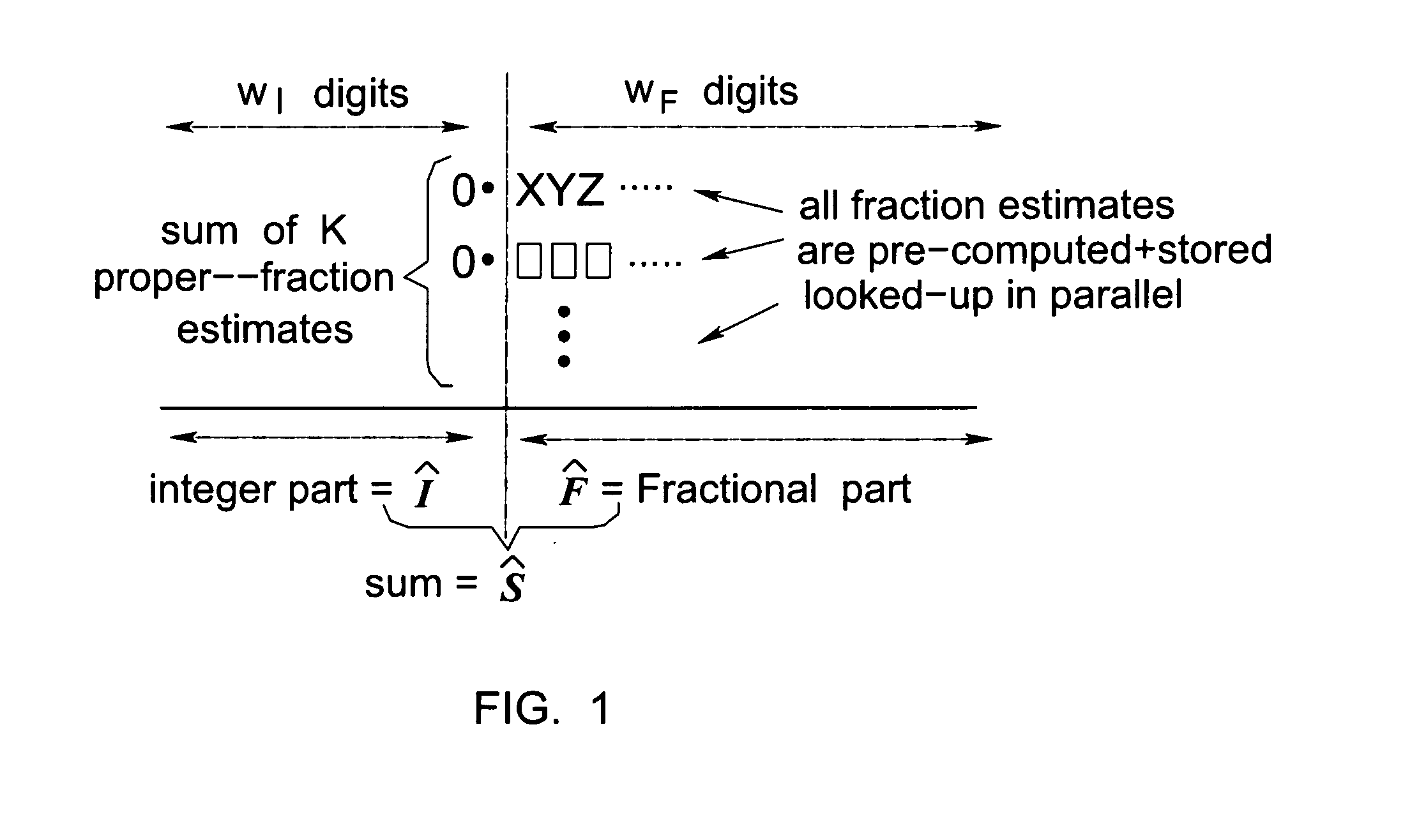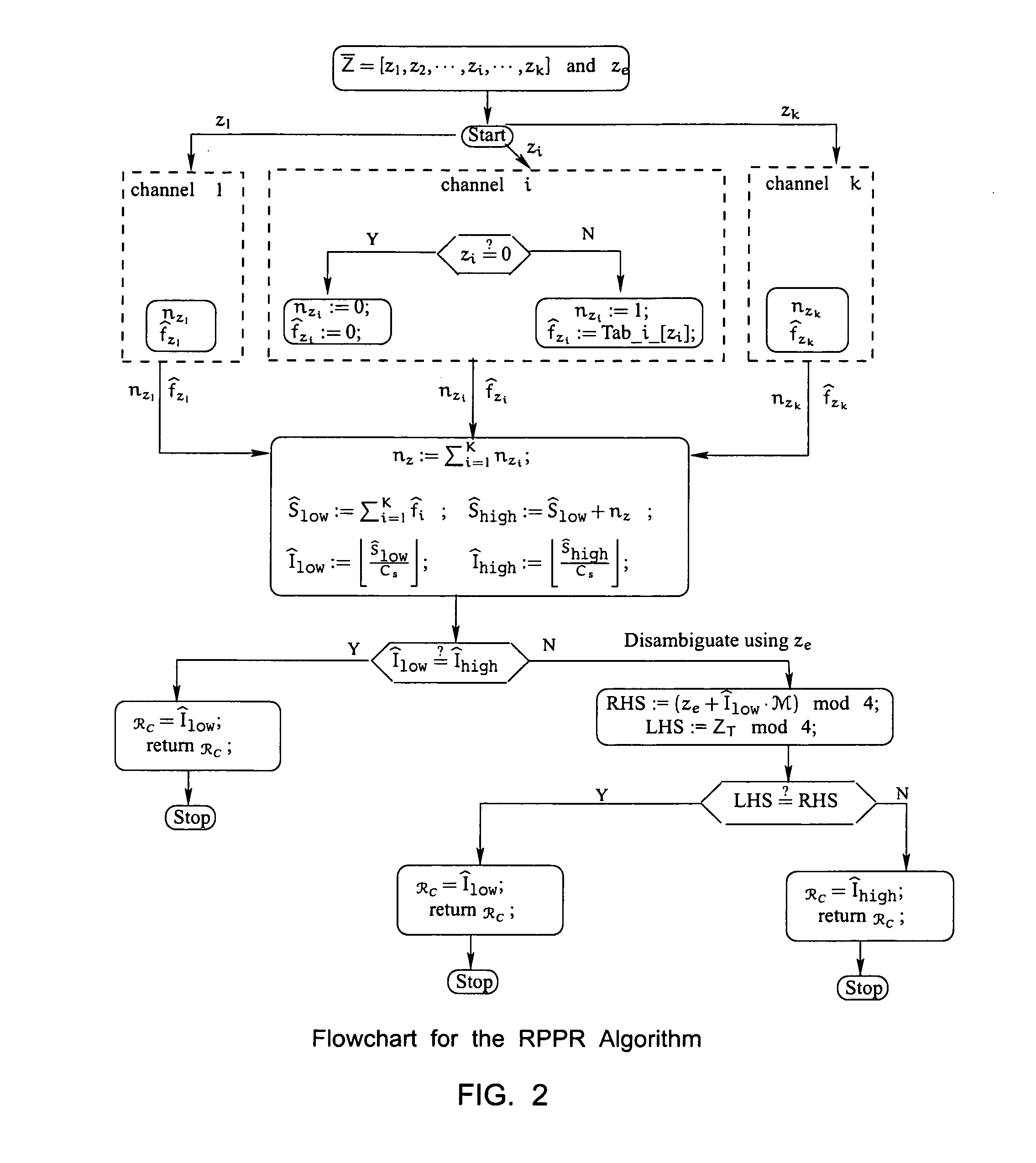Residue Number Systems Methods and Apparatuses
a technology of residue number system and residue, applied in the field of performing residue number system calculations, can solve the problems of limiting the applicability of the method, and difficult comparison of the magnitudes of two numbers represented as residue touples
- Summary
- Abstract
- Description
- Claims
- Application Information
AI Technical Summary
Benefits of technology
Problems solved by technology
Method used
Image
Examples
case 1
/ i>B)>Posedge=Fmax+ and (90)
case 2
/ i>B)−Fmax−) or dividing both sides by (91)
(A⊗B)>Fmax+and(92)(A⊗B)<Fmax-(93)
[0259]However, recall that the decision boundaries T+ and T− are shifted by a small amount into the “separation region”. As a result, whenever input values in the range [Fmax+,T+] or in the range [T, Fmax] are encountered, they will be wrongly classified as being within the correct range even though they are actually outside the designated range. The only solution to this problem is to separately evaluate the sign of either (Z−Fmax+) or (Z−Fmax−) to explicitly check for overflow.
[0260]§4.4.2.A Specification of Overflow Detection Algorithm via Maple-Style Pseudo-Code
Algorithm Eval_overflow( Z, ze, Sign, approx_overflow)# Note that every invocation of this algorithm must be immediately preceded by# an invocation of the Eval_sign algorithm / * Precomputations: same as those for algorithm Eval_signInputs: Z, ze, Sign of Z, approx_overflow for ZThe last two values are obtained as a result of the execution o...
PUM
 Login to View More
Login to View More Abstract
Description
Claims
Application Information
 Login to View More
Login to View More - R&D
- Intellectual Property
- Life Sciences
- Materials
- Tech Scout
- Unparalleled Data Quality
- Higher Quality Content
- 60% Fewer Hallucinations
Browse by: Latest US Patents, China's latest patents, Technical Efficacy Thesaurus, Application Domain, Technology Topic, Popular Technical Reports.
© 2025 PatSnap. All rights reserved.Legal|Privacy policy|Modern Slavery Act Transparency Statement|Sitemap|About US| Contact US: help@patsnap.com



